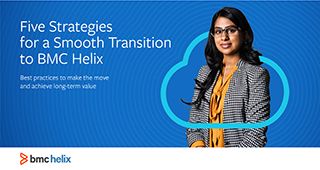Replacing an on-premises system with a software-as-a-service (SaaS) solution requires careful attention to existing connectors and systems. The original application is part of a complex network of on-premises databases, tools, and other systems and must be maintained seamlessly to ensure the service your employees and customers rely on keeps working as before. Let’s take a look at the technical implications of getting your SaaS apps to play well with your on-premises applications and databases.
Hybrid Means Integration
Most organizations today are approaching cloud in an incremental manner. That means hybrid IT environments that include both cloud and on-premises resources will be with us for the foreseeable future. Consequently, organizations need to connect SaaS apps with on-premises resources.
Connecting with Databases
In my blog “5 Questions to Ask About Data in Your SaaS Environment,” I noted that you may not be able to move all the data that supports a SaaS app to the cloud. Security policies, for example, might require you to keep some of the data inside the firewall. So, you must provide a means to maintain the connections between the cloud-based SaaS app and the on-premises data.
Connecting with Applications and Services
Today’s IT infrastructures include a jumble of interconnections among applications, services, and data. For example, an on-premises onboarding application for new hires may create a workorder in an on-premises IT service management (ITSM) system. That workorder kicks off a series of tasks that gets approval for a computer and access to the appropriate IT apps and services, passes it to procurement so appropriate items are ordered, receives the items, and schedules installation. The ITSM system reports back to the onboarding application when the request is fulfilled. If you move the ITSM app to the cloud, you have to ensure that this complex process continues to work in both directions.
Scoping the Integration Effort
Your on-premises integrations, especially the ones that have been in place for a number of years, may have been created using application programming interfaces (APIs) such as C# or Java direct calls. More recent ones may have been developed using REST (REpresentational State Transfer). REST is a stateless, client-server, cacheable communications protocol that has a higher built-in level of security than C# or Java direct calls.
When you move an on-premises app to SaaS, you have to determine whether you need to replace integrations that use C# or Java. A major consideration in making this determination is protecting the data that flows between the on-premises and the cloud components of the hybrid environment. A determining factor is the direction of data flow; that is, whether the flow is from the SaaS app to the on-premises solution or vice-versa.
Let’s assume that the data flows from cloud to an on-premises app using traditional APIs such as C# and Java calls. Here, switching to the more secure REST for the API calls would protect the information in transit. You also need to open ports in the on-premises firewall to allow authorized traffic, regardless of the API used to initiate the push. That’s because firewalls present a barrier for most APIs.
If the flow is from on premises to the cloud, the SaaS provider may have restrictions that require a more secure API protocol than C# or Java direct calls. In this situation, switching to REST usually suffices.
In some cases, the programmer who coded the initial integration may no longer be available. Moreover, you may not have documentation on the integration. So, recoding the integration might be tricky.
One alternative is to introduce a layer between the on-premises and cloud solutions, such as a client gateway, that allows bidirectional integrations to continue using the current API. Keep in mind that this approach requires opening up secure ports. What’s more, you may need buy-in from your organization’s security team. The security review process could delay implementation, postponing the benefits of the SaaS app. Moreover, the security team may nix the gateway approach entirely.
Cost Considerations
Be sure to consider all the costs associated with integration in the hybrid environment. For example, the SaaS provider may have a subscription model for the hybrid situation that charges based on the volume of data flowing into or out of the SaaS app. You need to account for this additional cost, which you didn’t incur when everything was on premises. What’s more, if you use a gateway, you may find that the SaaS provider charges extra to use its secure ports. That also translates into additional ongoing costs.
Integration and its associated costs are certainly important considerations in deciding whether to move an app to the cloud. But you must think about the move in the broader context of your strategic objectives. Examples include improving employee productivity by simplifying app use or extending app access as in the case of the large number of people working from home as a result of COVID-19. Strategic objectives are driving the move to SaaS in many organizations. As a result, the cost is considered a worthwhile strategic investment that will yield long-term business benefits.
Experience Counts
If you’ve ever moved from one home to another, you’ve learned that experience counts. Each time you move, you find ways to get the job done faster and more efficiently. That’s why many people hire a moving company whose trained and experienced employees can pack up your stuff and get it loaded, transported, and unloaded—all in short order and without breaking your grandmother’s fine china.
Likewise, many organizations that are moving to BMC SaaS solutions are partnering with BMC Customer Success to take advantage of the team’s experience gained through participation in hundreds of customer SaaS migrations. Our trained technical specialists have helped large and midsize organizations across many different industries plan and implement the move to SaaS. They’ve played a key role in helping customers avoid pitfalls, mistakes, and missteps on the journey to cloud and ensuring fast, reliable implementation. Examples include:
- Developing detailed roadmaps that facilitate and accelerate the move to SaaS while minimizing costs and reducing business risk
- Determining what data to migrate to the cloud and what data to maintain on premises, taking into consideration cost, security, timing, and efficiency
- Implementing data migrations of all sizes
- Identifying which integrations can be migrated as is and which must be rebuilt for cloud-to-cloud or hybrid interactions
- Implementing integrations that deliver secure, reliable interoperation and data access across on-premises and cloud solutions.
Well Worth the Effort
When you move to SaaS, you most likely will have to integrate SaaS apps with on-premises resources. But the effort is more than offset by the rewards. Once integrated, you can enjoy the significant advantages of SaaS, such as nearly limitless scalability that allows you to flex up or down as needed, vendor-provided maintenance and support which saves you money, and wide remote access.
We’d love to hear about your SaaS successes, questions, or concerns. Please share them by e-mail to blogs@bmc.com. If you need assistance with your transition to SaaS, please fill out our form and a BMC Customer Success expert will reach out to get started.
Five Strategies for a Smooth Transition to BMC Helix
These postings are my own and do not necessarily represent BMC's position, strategies, or opinion.
See an error or have a suggestion? Please let us know by emailing blogs@bmc.com.







